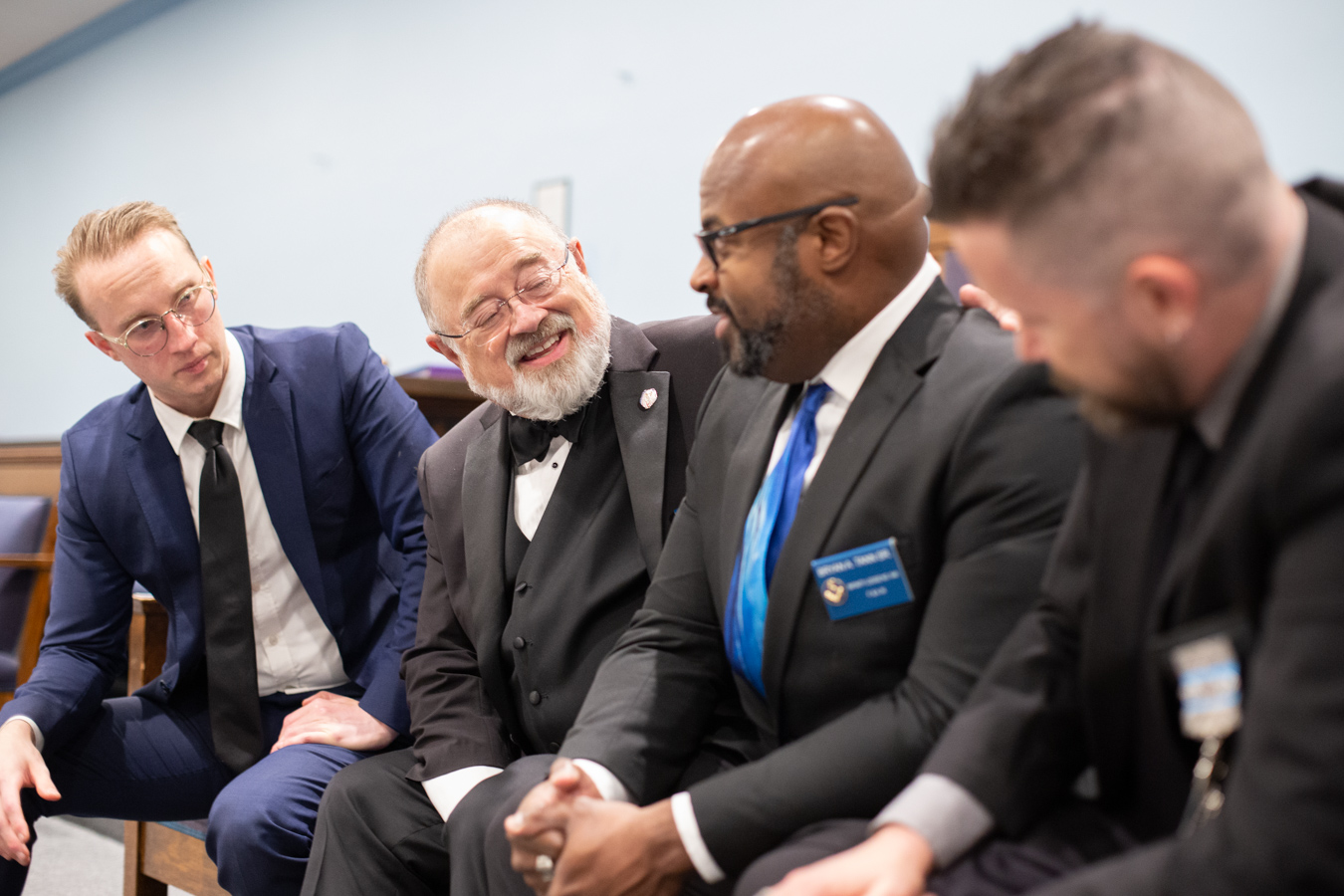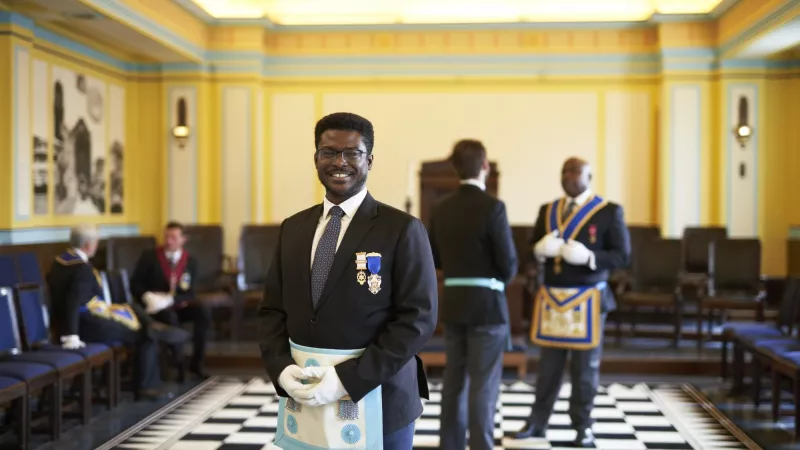Essential Steps You Must Follow for How to Become a Freemason Quickly
Essential Steps You Must Follow for How to Become a Freemason Quickly
Blog Article
Discovering the Mysteries of the Freemason: What You Need to Know
The Freemason, a term often shrouded in intrigue and conflict, stands for an intricate tapestry of historical fact and modern myth. Developed in the late 18th century, this secret culture was initially rooted in the Enlightenment's ideals yet has given that come to be synonymous with conspiracy theory concepts concerning elite control. As we browse the origins, crucial figures, and the plain contrast in between myth and reality, one have to consider how these narratives affect contemporary understandings of power and secrecy. What could be exposed via a better exam of these components might test long-held assumptions about the darkness that stick around in our society.
Origins of the Freemason
The beginnings of the Freemason are steeped in a mix of historic intrigue and ideological eagerness. Established in 1776 in Ingolstadt, Bavaria, by Adam Weishaupt, the team was initially formed as a secret culture intended at advertising Knowledge perfects such as factor, secularism, and the splitting up of church and state. Weishaupt, a teacher of canon legislation, sought to challenge the prevailing authority of the church and state, which he considered as overbearing establishments suppressing intellectual and personal flexibility.
The Freemason looked for to hire influential participants from numerous societal fields, consisting of national politics, academic community, and the arts, to cultivate a network dedicated to these Knowledge principles. The society run under a shroud of privacy, utilizing coded language and rituals to safeguard its participants from oppression, especially offered the repressive environment of the time. The Freemason encountered significant opposition from both governmental authorities and spiritual institutions, which saw the group as a hazard to their power.
Trick Figures and Participants
That were the essential figures that formed the Freemason's very early influence and direction? The Bavarian Freemason, established in 1776 by Adam Weishaupt, became an action to the oppressive societal frameworks of the moment. how to become a freemason. Weishaupt, a legislation professor, imagined the organization as a way to advertise Knowledge ideals such as factor, secularism, and equal rights. His initial recruitment initiatives consisted of significant pundits, such as Baron von Knigge, that played a vital duty in increasing the team's subscription and organizational framework.
One more considerable figure was Johann Gottlieb Fichte, a prominent theorist whose ideas on nationalism and education resonated with the Freemason's goals. Fichte was not a formal member, his thoughtful foundations affected the team's belief. Furthermore, numbers like the author and philosopher Johann Wolfgang von Goethe were connected with the broader intellectual movements of the moment, although their direct participation with the Freemason remains debated.
These essential figures contributed to the Freemason's early instructions, pushing the limits of political and social idea, while their collective initiatives aimed to challenge well-known norms and read promote a climate of modern adjustment in Europe.
Misconceptions vs. Reality
Numerous false impressions border the Freemason, often mixing fact with fiction in such a way that covers its true nature. This secret culture, originally founded in 1776 in Bavaria, intended to advertise Enlightenment ideals and fight religious and political injustice. The concept that the Freemason continues to put in considerable impact over globe events is a misconception. While the team did exist, it was disbanded in the late 18th century and has not run as a natural entity given that after that.
An additional common myth is that the Freemason comprises a network of elite individuals controling global affairs. Actually, lots of conspiracy theory concepts exaggerate the team's importance, associating misguided intentions to societal trends and occasions. This has brought about an oversimplified view of complex concerns.

Modern Analyses
Contemporary analyses of the Freemason often reflect broader social anxieties and an attraction with privacy and power. This modern lens regularly links the Freemason with conspiracy concepts that recommend a surprise elite orchestrates globe occasions, adjusting federal governments and economies for their own gain. Such narratives tap into a deep-rooted mistrust of authority, especially in times of crisis or social upheaval.

In addition, some contemporary analyses frame the Freemason as an allegory for the intricacies of globalization and the interconnectedness of prominent people and companies. This viewpoint urges a vital assessment of just how power dynamics operate in today's globe, highlighting the equilibrium in between transparency and secrecy in administration and corporate techniques.
Cultural Impact and Legacy
Influenced by centuries of intrigue, the cultural influence and tradition of the Freemason extend far past its historical origins. This secret culture, established in the late 18th century, has penetrated various elements of prominent society, from literature and film to songs and art. The concept of the Freemason has actually progressed into a symbol of conspiracy theories, often representing a regarded covert power adjusting worldwide events.
In literature, writers like Dan Brown have woven the Freemason right into detailed plots, captivating visitors with check my source motifs of privacy and power. Films such as "National Treasure" and "The Da Vinci Code" better perpetuate the attraction of the culture, blending reality with fiction to produce engaging stories.
The Freemason's influence additionally extends into songs, with musicians referencing the company to evoke styles of disobedience and societal critique. This representation has actually added to a fascination with the idea of clandestine teams regulating the levers of power, mirroring social stress and anxieties regarding authority and transparency.
Inevitably, the Freemason's tradition is a complex tapestry of misconception and reality, shaping assumptions of secrecy and control in modern discussion. Its long-lasting presence in society highlights mankind's perennial pursuit for comprehending covert realities.
Conclusion
The expedition of the Freemason exposes a complex interplay between historic facts and modern myth-making. Started in the Enlightenment period, this culture aimed to test oppressive structures, yet its tradition has actually been overshadowed by conspiracy theories that recommend elite manipulation. Recognizing the differences in between the original perfects and modern analyses is important for understanding the withstanding fascination with the Freemason and its significant influence on social stories bordering power and privacy in culture.
Report this page